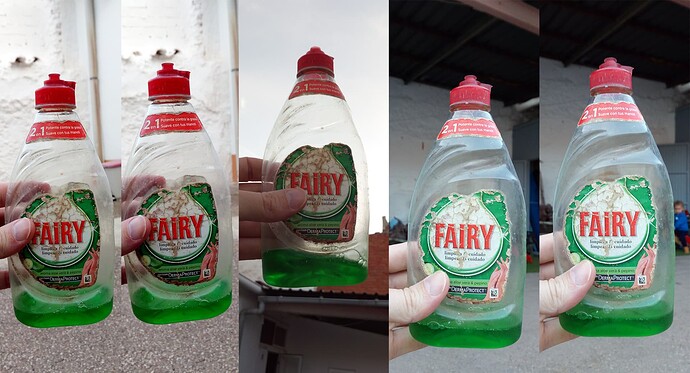Cool. Thanks for double-checking ! I think this confirms what Alex Fry has experienced in Resolve ? That grading under ZCAM in Resolve felt a bit “weird” ?
Following the very interesting meeting#41 and the comments about the Fairy’s green colour, I can confirm that “Fairy” is really common here in Spain and that the color we are used to see is the one displayed with OpenDRT and ACES in @priikone tests.
Edit : I could not resist the urge to take a few pics with my old phone of a Fairy bottle. What I really like about this simple example is that most of us know how a green Fairy looks like (a bit like the red Coke example). Arguably, we could say the same thing of blue skies even if it is a more complex (atmospheric) phenomenon. Let’s see if we can get to the bottom of this… 
Chris
